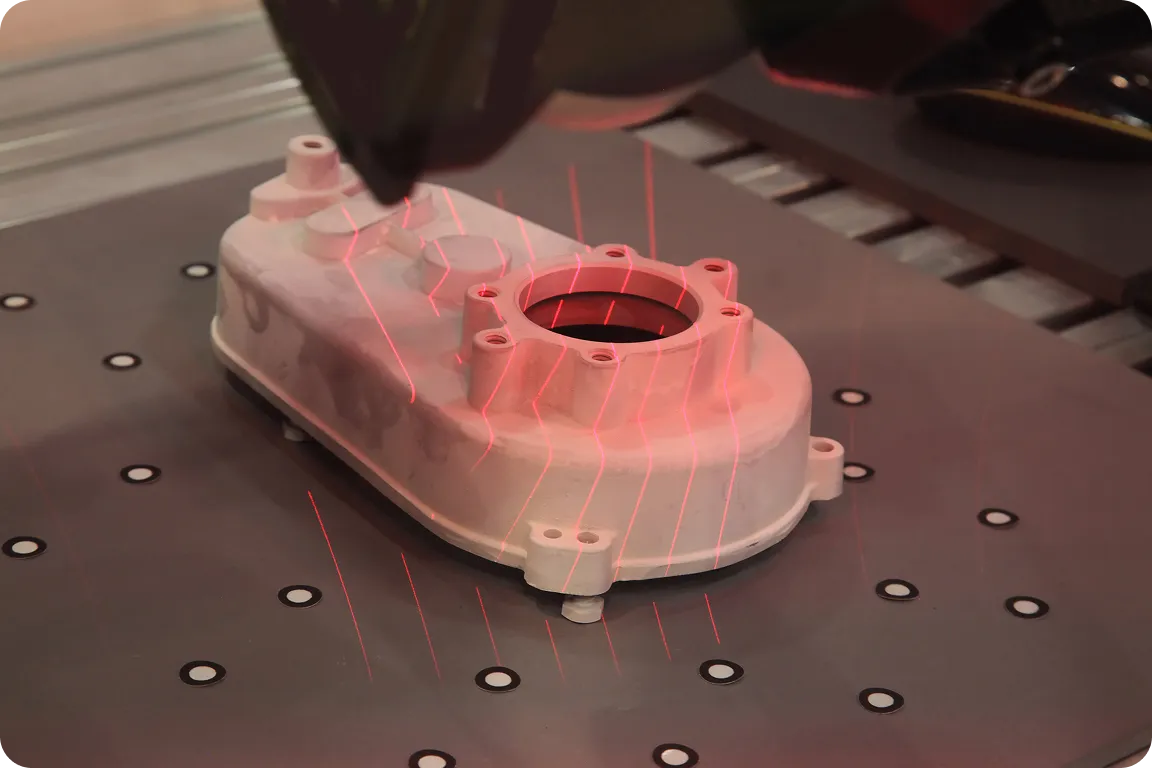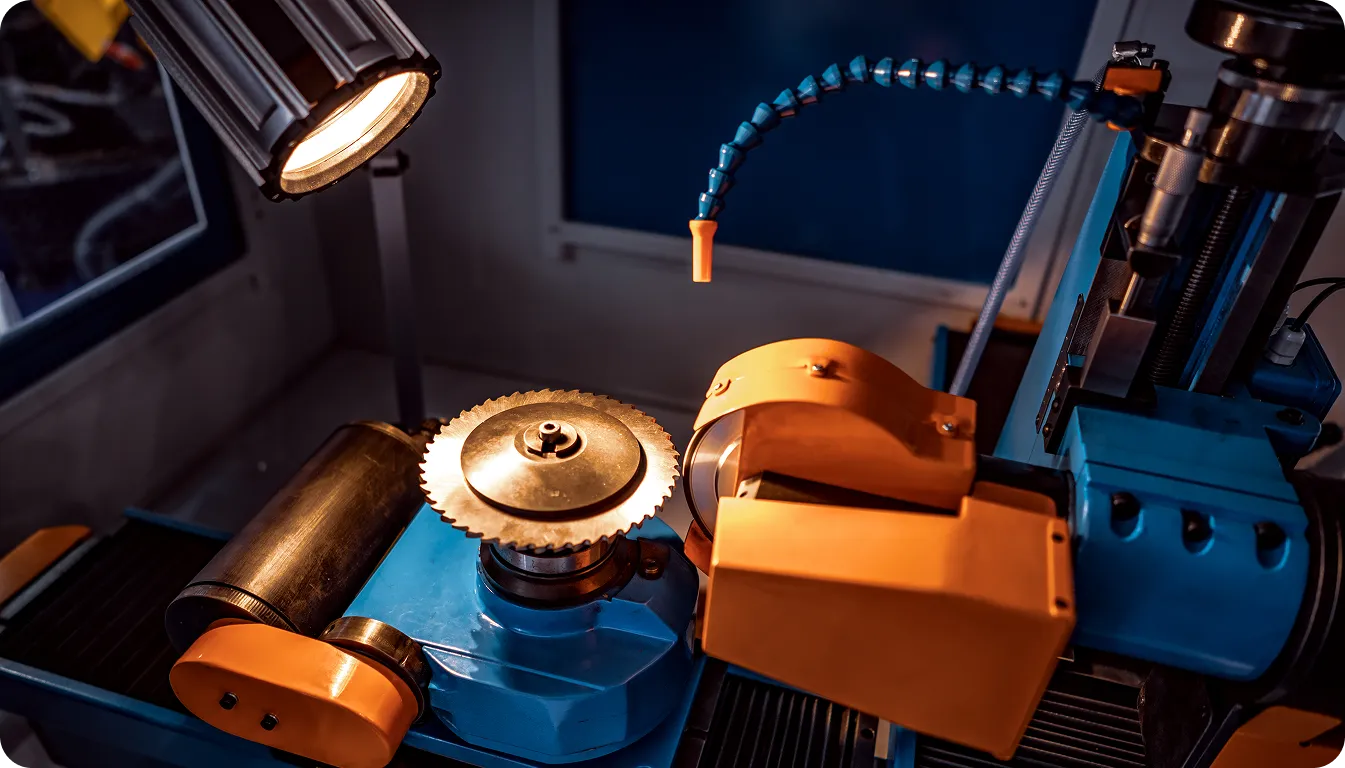فحص الجودة في التصنيع: الأساليب التقليدية مقابل أساليب التعلم العميق

18 أكتوبر 2024
تعرف على كيفية مساعدة أحدث نماذج اكتشاف الأجسام في أتمتة فحص الجودة في التصنيع.


18 أكتوبر 2024
تعرف على كيفية مساعدة أحدث نماذج اكتشاف الأجسام في أتمتة فحص الجودة في التصنيع.

يُعد فحص الجودة مهمة بالغة الأهمية أثناء التصنيع لضمان استيفاء المنتجات لمعايير الجودة المطلوبة. ومع ذلك، قد يكون تقييم الجودة باستخدام طرق الفحص التقليدية مكلفًا مع زيادة تعقيد المنتج.
يتجه المصنعون نحو تقنيات الفحص المستندة إلى التعلم العميق، مثل اكتشاف الأجسام والتجزئة الدلالية، لتقليل تكاليف الفحص. التعلّم العميق هو مجال فرعي للذكاء الاصطناعي يستخدم خوارزميات حاسوبية تسمى الشبكات العصبية لتحديد الأنماط المعقدة في البيانات. وتساعد هذه التقنيات على أتمتة سير عمل الفحص وتقليل الاعتماد على المفتشين البشريين من خلال تحليل مجموعات البيانات الشاملة، بما في ذلك الصور ومقاطع الفيديو.
نظرًا لتعدد استخداماته وفعاليته من حيث التكلفة، فإن ضمان الجودة القائم على الذكاء الاصطناعي يعزز ربحية الأعمال بشكل كبير. تشير التقارير إلى أن الصناعة التحويلية يمكن أن تكسب أكثر من 3 تريليون دولار أمريكي من الذكاء الاصطناعي بحلول عام 2035.
سيناقش هذا المقال كيف يمكن لأساليب التعلم العميق تحسين فحص الجودة وكيف يمكن لـ Ultralytics YOLO11 تحسين الفحص في العديد من الصناعات.
يقوم فحص الجودة بتقييم ما إذا كان المنتج يحتوي على عيوب أو شذوذ أو تناقضات قبل وصوله إلى المستهلك.
يمكن أن تحدث هذه العملية أثناء الإنتاج، حيث يتحرك المنتج عبر خط التجميع أو بعد الإنتاج، ولكن قبل انتقال العناصر إلى خط التوزيع.
في كثير من الأحيان، ينطوي ذلك على قيام خبراء بشريين بإجراء تقييمات بصرية لمعرفة ما إذا كان المنتج ينحرف عن معايير التصميم المطلوبة أو لا يفي بها.
ولكن، مع زيادة متطلبات الجودة، يتجه المصنعون نحو مناهج التعلم العميق المؤتمتة لتحقيق قدر أكبر من المرونة وقابلية التوسع في عملياتهم.
تستخدم مناهج التعلم العميق الشبكات العصبية الاصطناعية التي تعمل على مبادئ الدماغ البشري. الشبكات عبارة عن طبقات مترابطة من الخلايا العصبية. تقوم كل خلية عصبية بإجراء عملية حسابية رياضية لتحليل البيانات وتحديد الأنماط وتوليد تنبؤ.

في فحص الجودة، تتضمن نماذج التعلّم العميق أطر الرؤية الحاسوبية التي تتعلم وتستخرج الميزات تلقائيًا من صور المنتج.
يتطلب تطوير نماذج الرؤية الحاسوبية من الخبراء تدريب شبكة عصبية على مجموعات البيانات ذات الصلة وإجراء عمليات التحقق من الصحة على مجموعة بيانات جديدة للتحقق من الأداء.
بمجرد التحقق من صحة هذه النماذج، يمكن للخبراء نشر هذه النماذج على الكاميرات وأجهزة الاستشعار باستخدام أدوات نشر مختلفة مثل PyTorch و ONNX و OpenVINO.
يستخدم فحص الجودة القائم على الرؤية أساليب متعددة للكشف عن الأضرار والشقوق والعناصر المفقودة وتحديد مواقعها. تذكر القائمة أدناه أربعة أساليب حديثة للتعلم العميق.
يشير التصنيف الثنائي إلى مهمة تصنيف الصور إلى واحدة من فئتين، مثل تحديد ما إذا كان هناك عيب في جسم ما أم لا.
استنادًا إلى البيانات المرئية، يُنتج نموذج التصنيف قرارًا ثنائيًا بنعم/لا. فهي تساعد في اكتشاف العناصر المفقودة. على سبيل المثال، يمكن لنموذج التصنيف اكتشاف ما إذا كان عنصر ما مفقودًا أم لا في منتج ما.

التصنيف متعدد الفئات هو مهمة تصنيف الصور إلى أكثر من فئتين. حيث يتم تعيين كل صورة إلى واحدة من عدة فئات محددة مسبقاً.
على سبيل المثال، قد يقوم نموذج تصنيف متعدد الفئات بتحليل صورة المنتج وإرجاع احتمالات لأنواع متعددة من التلف أو التشققات، مع الإشارة إلى أي منها هو الأكثر احتمالاً.

ويفيد ذلك في التصنيع حيث قد تتطلب العيوب المختلفة، مثل الخدوش أو الخدوش أو الشقوق، إجراءات معالجة مختلفة.
يشير التوطين إلى تحديد الموقع المحدد لكائن أو ميزة داخل الصورة. ويستخدم نماذج الكشف عن الكائن للتنبؤ بالمربعات أو الإحداثيات المحددة التي تبرز المنطقة المحددة للضرر.
وهذا مفيد لمهام مثل الكشف عن التشققات في المباني أو الأجزاء الصناعية، حيث يكون الموقع الدقيق للعيب ضروريًا للإصلاحات المستهدفة.

على سبيل المثال، في مجال صيانة البنية التحتية، يمكن لنماذج التوطين تحليل صور الهيكل الخرساني وتحديد المنطقة التي يوجد بها التصدع بالضبط.
يقوم التوطين متعدد الفئات بتحديد العيوب المتعددة داخل الصورة وتحديد موقعها مع تصنيف كل عيب في واحدة من عدة فئات محددة مسبقاً.
يستخدم نماذج أكثر تقدماً للكشف عن الأجسام لتحديد نوع العيب وموقعه لتقديم معلومات أكثر تفصيلاً.

على سبيل المثال، يمكن لنموذج توطين متعدد الفئات تحليل صورة لعنصر تالف والإشارة إلى نوع العيب، مثل الخدش أو التشقق، والإحداثيات الدقيقة للعيب داخل العنصر.
تعتبر طرق الفحص التقليدية أكثر صرامة، حيث تتبع قواعد ومعايير محددة من قبل المستخدم مثل العتبات وقوائم المراجعة المحددة مسبقًا ومعايير النجاح/الإخفاق.
على سبيل المثال، في تقنيات الرؤية القائمة على القواعد، يحدد الخبراء اللون والشكل والحجم المثالي لمنتج معين. يخطر النظام الخبراء إذا اكتشفت الكاميرا أو أي جهاز آخر لالتقاط الصور انحرافات عن هذه المعايير.
توفر مناهج التعلم العميق مرونة أكبر لبناء أنظمة كشف أكثر تعقيداً. تتضمن هذه النُهج جمع مجموعات بيانات واسعة من صور الأجسام المعيبة ووضع شروح لها. يستخدم الخبراء البيانات المشروحة لتدريب نماذج الكشف عن الأجسام مثل Ultralytics YOLO11. وبمجرد التدريب، يمكنهم نشر النموذج في الكاميرات أو أجهزة الاستشعار لالتقاط الصور وتحديد العيوب في الوقت الفعلي.
في القسم التالي، سنلقي نظرة على كيفية استخدام YOLO11 لفحص الجودة.
YOLO (YOLO) هو نموذج متطور للكشف عن الأجسام في الوقت الحقيقي (SOTA) يشتهر بالدقة العالية والقدرة على التكيف والسرعة. أحدث إصداراته هو Ultralytics YOLO11، والذي يعمل على تحسين الإصدارات السابقة من حيث استخراج الميزات والسرعة والدقة والقدرة على التكيف.
يتميز ببنية أفضل لاستخراج ميزات أكثر دقة ويتضمن خطوط أنابيب تدريب محسّنة لسرعات معالجة أسرع. وهو أكثر كفاءة من الناحية الحسابية، مع عدد أقل من المعلمات بنسبة 22% ودرجات دقة أعلى من سابقيه.
نظرًا لتعدد استخداماته، يمكن أن يساعد YOLO11 في تحسين سير عمل فحص الجودة في مجالات متعددة. يمكن أن يساعد في الكشف عن الحالات الشاذة والأضرار والتشققات والعناصر المفقودة وأخطاء التغليف في المنتجات من خلال أداء مهام مثل اكتشاف الأجسام وتجزئتها.
دعنا نلقي نظرة على بعض الطرق التي يمكن من خلالها استخدام نماذج الرؤية الحاسوبية في مجال التصنيع.
يمكن لنماذج الرؤية الحاسوبية التحقق مما إذا كان المنتج يحتوي على جميع العناصر الضرورية. ويمكنها اكتشاف المكونات المفقودة في المنتجات المجمعة لضمان اكتمالها.
في مجال تصنيع الإلكترونيات، يعد تحديد المكونات المفقودة أو الأجزاء غير المتناسقة أو مشكلات اللحام أمرًا بالغ الأهمية لضمان موثوقية المنتج النهائي ووظائفه الصحيحة.
يمكن تدريب نماذج اكتشاف الكائنات مثل YOLO11 على اكتشاف المكونات المفقودة أو الموضوعة في غير مكانها على لوحات الدوائر الكهربائية. ويمكنها تحليل صور اللوحات في الوقت الفعلي، وتحديد العيوب مثل المقاومات أو المكثفات المفقودة. سيضمن ذلك صحة تجميع كل وحدة قبل الشحن.
اكتشاف التصدع هو مهمة كشف أخرى تقوم بتحليل الصور أو بيانات المستشعر لتحديد موقع التصدع وحجمه وشدته.
تعد صناعة السيارات أحد الأمثلة على ذلك حيث يعد الكشف عن الشقوق في المكونات المتعددة مثل التروس وأنظمة المكابح ضروريًا لضمان استيفائها لمعايير السلامة.
يمكن تدريب نماذج مثل YOLO11 على اكتشاف العيوب بسرعة مثل الخدوش السطحية أو الشقوق في مكونات السيارات المعقدة.
يمكن أن تساعد الرؤية الحاسوبية في اكتشاف أنواع مختلفة من الأضرار على سطح المنتج، مثل الخدوش والانبعاجات والتشوهات باستخدام مهام الرؤية الحاسوبية.
يمكن لصناعة النسيج أن تستفيد بشكل كبير من الكشف عن التلف القائم على الذكاء الاصطناعي باستخدام نماذج الكشف عن الكائنات وتجزئتها مثل YOLO11. ويمكنه تحديد العيوب مثل التمزقات أو الثقوب أو البقع أو التناقضات في النسيج أثناء عملية الإنتاج.
يشير الكشف عن الشذوذ إلى مهمة تحليل تصميم المنتج وهيكله ومظهره وحجمه لتقييم ما إذا كانت هذه الخصائص تنحرف عن المعايير المطلوبة.
في تصنيع المستحضرات الصيدلانية، يُعد اكتشاف الشذوذ أمرًا حيويًا لضمان جودة وسلامة المنتجات الدوائية. يمكن للمصنعين استخدام YOLO11 للكشف عن المخالفات مثل التناقضات في أشكال الأقراص أو أحجامها أو تغير لونها أو الجسيمات الغريبة.
ومن الأمثلة الأخرى على كيفية استخدام نماذج الرؤية الحاسوبية في التصنيع في مجال التغليف ووضع الملصقات في الصناعات. على سبيل المثال، يجب أن تفي صناعة الأغذية والمشروبات بالمعايير الصارمة لسلامة المستهلك والامتثال.
يمكن أن تساعد نماذج مثل YOLO11 في اكتشاف أخطاء التغليف مثل الملصقات غير الصحيحة أو العبوات التالفة أو أختام السلامة المفقودة. ويمكنه أيضًا التحقق من أن الملصقات لها مواضع صحيحة مع وجود رموز شريطية واضحة أو تواريخ انتهاء الصلاحية.
وهذا يضمن امتثال المنتجات للوائح الصناعة وجاهزيتها للتوزيع على المستهلكين.
لا تزال أطر فحص الجودة القائمة على الذكاء الاصطناعي في تطور مستمر وتواجه العديد من التحديات. فيما يلي بعض القيود والتوجهات البحثية المستقبلية التي يجب أخذها في الاعتبار بالنسبة لهذه التقنيات.
يشهد فحص الجودة القائم على التعلم العميق تقدماً هائلاً بسبب التطوير المستمر لنماذج مختلفة للكشف عن الأشياء. وبفضل فحص الجودة القائم على الذكاء الاصطناعي، يمكن للمصنعين تحقيق قابلية توسع ومرونة أكبر من الأساليب التقليدية.
يمكن للشركات استخدام نماذج مثل YOLO11 لأتمتة عملية الفحص، والاستفادة من بنيتها المحسّنة وقدراتها المحسّنة في استخراج الميزات مما يؤدي إلى دقة أفضل وسرعة أكبر.
يمكنك معرفة المزيد حول YOLO11 ونماذج اكتشاف الكائنات الأخرى من خلال الاطلاع على مستودع GitHub الخاص بنا والتفاعل مع مجتمعنا النابض بالحياة. اكتشف كيف تقوم Ultralytics بإعادة تعريف التصنيع من خلال أحدث أطر التعلم العميق.


